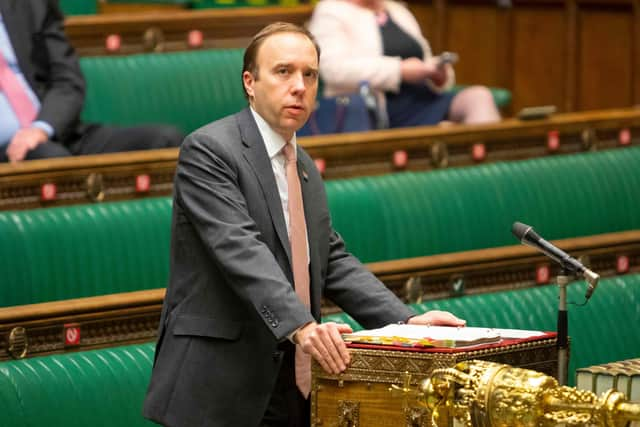Three key reasons Sheffield and the rest of South Yorkshire were kept in Tier 3 - and what they must do to get out
and live on Freeview channel 276
That means cafes, restaurants and pubs must remain closed other than for takeaways, collections and deliveries, while households are banned from mixing indoors or in private gardens.
The Government has now published its reasons for keeping the region in the highest tier despite Covid-19 rates having fallen since the national lockdown eased and pressure on local hospitals no longer rising as it had been.


Advertisement
Hide AdAdvertisement
Hide AdIn a written statement, health secretary Matt Hancock said: “Since the end of national restrictions South Yorkshire has improved marginally but is still of concern.
"Case rates are decreasing in Barnsley, Doncaster and Sheffield but remain over 150 per 100,000 in those aged over 60 in Barnsley and Doncaster.
"Rotherham remains of concern with case rates in all ages and in over 60s remaining over 200 per 100,000. The epidemiology indicators remain too high for de-escalation to Tier 2.
"While COVID admissions, bed occupancy and critical care bed occupancy in the area are not rising, they are above the national averages.”
Advertisement
Hide AdAdvertisement
Hide AdThe Government must legally review the tiers again by December 30 but Mr Hancock said that in practice they are reviewed every week, meaning areas could be moved up or down sooner.
It has not published any specific targets which must be hit for an area to be moved down a tier, simply saying a range of key factors, including the infection rate and pressure on hospitals, will be taken into account.
But the examples of Bristol and North Somerset, which were the only two areas to be moved down from Tier 3 to Tier 2, give an indication of what needs to be achieved for that to happen in South Yorkshire.
In both areas the infection rate remains at around 120 new cases per 100,000 but is stable or decreasing, while the number of Covid-19 patients in hospital remains stable and is below the national average, the Government’s rationale states.
Advertisement
Hide AdAdvertisement
Hide AdSheffield’s director of public health, Greg Fell, has said it was the ‘right decision’ for South Yorkshire to remain in Tier 3, explaining ‘our figures were going down, but sadly, this is no longer the case’.
He has urged people to exercise caution over Christmas.